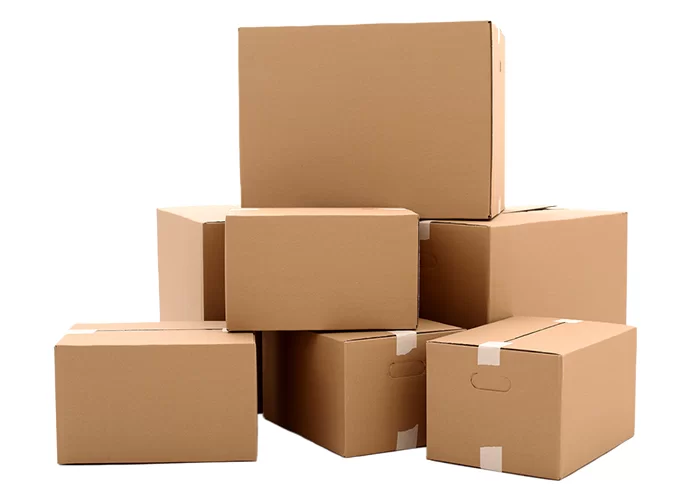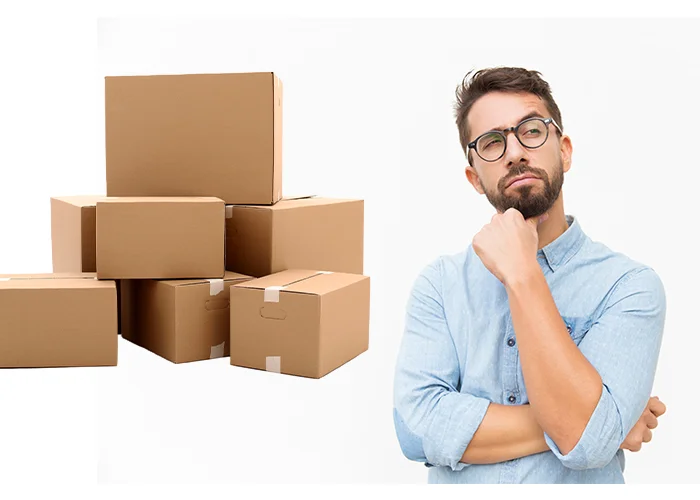Moving house is often an extremely tiring, expensive, and stressful experience. The only way to make things somewhat simpler is by planning well in advance. Among the various things that people need to think about to make the moving process relatively simpler and hassle-free, choosing the right moving boxes is perhaps the most important. Using the right packing boxes ensures safe transportation of goods and also helps to reduce the overall cost of the move. Since moving boxes come in different styles, shapes, and sizes, people often feel confused about choosing the right boxes. This article acts as an ultimate guide to help people choose the right boxes for packing different items while relocating to a new place.
Types of Boxes Based on Size
The first and the most important thing to understand about moving boxes is their categorization based on size. Before people start preparing the packing their goods, they need to be aware of the different sizes of the boxes available in the market. Given below is a handy guide for the different box sizes people can choose from.
-
Small Boxes
Small boxes come in quite handy for packing smaller items such as books, canned items, small stuffed animals, toys, shoes, etc. A small box is also suitable for moving small utensils, electronic wires, chargers, everyday tools, toiletries, and other such items. These boxes generally have a capacity of up to 36 cubic liters which makes them easy to lift and carry around.
-
Medium Boxes
Medium boxes are the standard moving boxes and offer great packing versatility. These boxes have a capacity of up to 52 cubic liters and can hold a wide variety of items such as clothes, small appliances, dishes, table lamps, lamp shades, décor items, and other such things. However, it is important to maintain a proper balance of weight while packing stuff in these boxes to prevent them from becoming too heavy. It is equally important to fill up the empty space in these boxes to minimize the risk of damage to goods due to movement during transportation.
-
Large Boxes
Large boxes are equally popular pack boxes and are generally used for transporting larger items that have a relatively lighter weight. A large box generally has a capacity of 150 cubic liters and can also be used for packing multiple smaller and lightweight items. These boxes are best suited for packing pillows, comforters, light blankets, paintings, and similar items. Given their bigger size, moving these boxes can be somewhat inconvenient, especially if the things they contain are too heavy.
-
Extra-Large Boxes
Even though extra-large boxes are the least used boxes for moving, they are suitable for packing things having an odd shape and size, such as uniquely shaped décor items. These boxes have a capacity of more than 150 cubic liters and often need to be filled with other soft and lightweight items. These additional items provide enhanced cushioning to the odd-shaped objects and ensure their safe transportation besides optimizing space utilization.
Gaining A Better Understanding Of Speciality Boxes
Many times, it is not possible to pack certain items in different size boxes due to various reasons. In such cases using specially designed moving boxes for packing these items is the best choice. The most common specialty boxes include the following.
-
Mattress Boxes
As the name suggests, a mattress box is a special container for the safe transportation of mattresses while moving. The box is wrapped around the mattress creating a protective covering that minimizes the risk of ripping, tearing, and dirt accumulation.
-
Dish Boxes
Dish boxes feature special cel dividers that make packing china and cutlery easier and safer. Since the cells create an individual and secure holding place for each item, it minimizes the risk of damage due to rattling during transportation. It is still advisable to wrap each item in packing paper before placing it in its cell for enhanced safety.
-
Picture Cartons
Picture cartons are the best option for transporting picture frames, mirrors, and paintings, without damaging them. These boxes are generally large and thin and feature a layer of bubble wrap on their inner sides to keep delicate items safe during handling and transportation.
-
Wardrobe Boxes
A wardrobe box is a special type of moving box for transporting clothes on hangers just like they stay in the wardrobe. Wardrobe boxes are best suited for packing special clothing items such as suits, dresses, and costumes, in a clean and wrinkle-free manner.
-
Corrugated Boxes
Corrugated boxes are generally used for transporting fragile items such as glass and crystal wear, decorative items made of china, and other such things that can be easily damaged or broken. The items should be properly wrapped in appropriate packing materials before placing them in corrugated boxes. It is also advisable to place the sturdier items at the bottom and the more fragile ones on top.
Choosing The Right Packaging Material
In addition to choosing the right moving boxes, choosing the right packaging materials is equally important. Packaging materials play an important role in ensuring the safety of the goods during transportation and handling, especially breakable items. Here is a detailed checklist of the most important packing supplies that comes in quite handy while moving to a new home.
-
Foam Wrap Sheets
Foam wrap items are suitable for packing items that are fragile or can be easily damaged. It is also used for wrapping china and glassware to minimize the risk of chipping and damage while being transported in the truck.
-
Bubble Wrap
Bubble wrap is the ultimate solution for creating perfectly packed boxes containing collectible items, delicate pieces of décor, and other fragile goods. Bubble wrap can also be used to fill the space around specific items that need to be packed in large boxes due to their odd shape.
-
Cardboard
Cardboard is generally used for dividing large boxes into smaller sections for maximizing the safety of goods during the transition. It may also be used for enhancing the sturdiness of packed boxes by placing a cardboard sheet just below the flaps before sealing them with tape.
-
Packing Paper
Packing paper is used for wrapping a wide range of items before placing them in moving boxes to add an extra layer of protection. Many times people replace packing paper with newspaper or butcher’s paper or any other type of waste paper to save money and also protect the environment.
-
Packing Peanuts
Packing peanuts are mostly used for filling empty spaces in boxes containing delicate or heavy items. They provide the much-needed cushioning to prevent the items from tumbling around in the box and getting damaged during transportation.
-
Packing Tape
Packing tape is another important packaging material required for moving goods safely to the new place. It is mostly used to seal the top flaps of the packed boxes or to reinforce the bottom of the boxes to enhance their sturdiness. People often use duct tape in place of packing tape to ensure a more secure sealing of the boxes.
What Should You Not Pack In Moving Boxes
Before people begin packing for relocation to a new place, it is important to learn about the things that they should never pack in moving boxes. These mostly include perishable items, frozen foodstuff, and items that are irreplaceable or too valuable to be transported with other general household items in a moving truck. It is also advisable to avoid packing ammunitions, explosives, firecrackers, and other easily inflammable things in regular cardboard boxes. In addition, items like jewelry, financial papers, wills and deeds, and other important documents should be carried along by the owners rather than packing them in moving boxes.
What Is The Best Way To Move Boxes
Not having the right tools can make moving the boxes extremely difficult and tiring. The best way to move the boxes is by using wheeled hand carts or dolly carts which can easily hold multiple boxes at once. The important thing to remember is that the boxes containing bulky items should be placed at the bottom and those with lighter items should be stacked on top. For any heavy lifting, using Forkarm lifts is highly recommended to ensure easier and damage-free handling of larger items and heavy-duty boxes. The family members can carry the smallest boxes in hand to be placed in the moving truck.
How Do You Calculate How Many Boxes I Need To Moving
The number of moving boxes required by different people varies as per the size, volume, and type of their belonging. In general, you would require anywhere between 100-150 boxes for packing all your belongings for a family of four. However, you might need more boxes if you have a larger house or if you have to pack the belongings of additional family members. An effective way to calculate how many boxes you would need for moving is by calculating the square footage of each room of the house. As a rule of thumb, you will require around 4 to 11 small boxes, 2 to 4 medium boxes, and 1-2 large boxes for each average-sized room of the house.
How Heavy Should Moving Boxes Be
When packing boxes for moving houses, it is important to ensure that the boxes do not become too heavy. This will make moving them around extremely difficult and can also cause the packed items to fall through due to excessive weight when the boxes are lifted. Moreover, carrying heavier boxes can also lead to serious injuries. While some boxes such as those containing the heaviest items or mattress boxes and wardrobe boxes are naturally heavy, it is advisable to keep the weight of the boxes below 23 kilograms. It is better to use more boxes of different sizes for packing things rather than trying to overpack things in fewer numbers or larger boxes.
Quick Ways To Get Free Moving Boxes
Getting free moving boxes is not as difficult as it seems if people know where to look. Finding free boxes helps to reduce the overall cost of the move besides minimizing the impact on the environment. However, it is important to check the quality of the free boxes to ensure safe packing and transportation while moving items. Some places to get free quality boxes for packing and moving items include the following.
-
Ask Family And Friends
People should start by asking the members of their family and friends about the availability of moving boxes. Asking them directly or putting out a word on social media is the best way to start searching for boxes in known quarters.
-
Check On Craigslist
Craigslist offers a great platform for finding free moving boxes. It is advisable to check the free section of the site towards the end of the weekend to find such boxes as this is the time when people clean out and give away their moving boxes.
-
U-Haul Customer Connect
U-Haul enables people to search for free moving boxes near them being offered by people who have just moved and want to get rid of their packing boxes. People just need to enter the zip code or the name of the city in the search box to find the boxes free of cost.
-
Check Office Supply Stores
Office supply stores get an abundant supply of boxes of different sizes, which can be used for packing household goods. These boxes are generally large, clean, and sturdy and enable people to pack different items in a safe and damage-free manner.
-
Verify In College Dorms
College dorms receive a new batch of students from different parts of the country each year. The boxes bought in by these students are mostly thrown away by them, which is why getting them for free is often quite easy.
-
Check With Recycling Centres
Recycling centers often receive a huge amount of packing and moving boxes in good condition. These centers are often more than happy to give the boxes away for free to help save the environment and reduce paper wastage.
Summing Up
Packing up the belongings is the most tiring, time-consuming, and frustrating aspect of the moving process. However, choosing the right size, type, and quantity of packing boxes can help make things somewhat simpler and hassle-free.

 0434 379 742
0434 379 742


